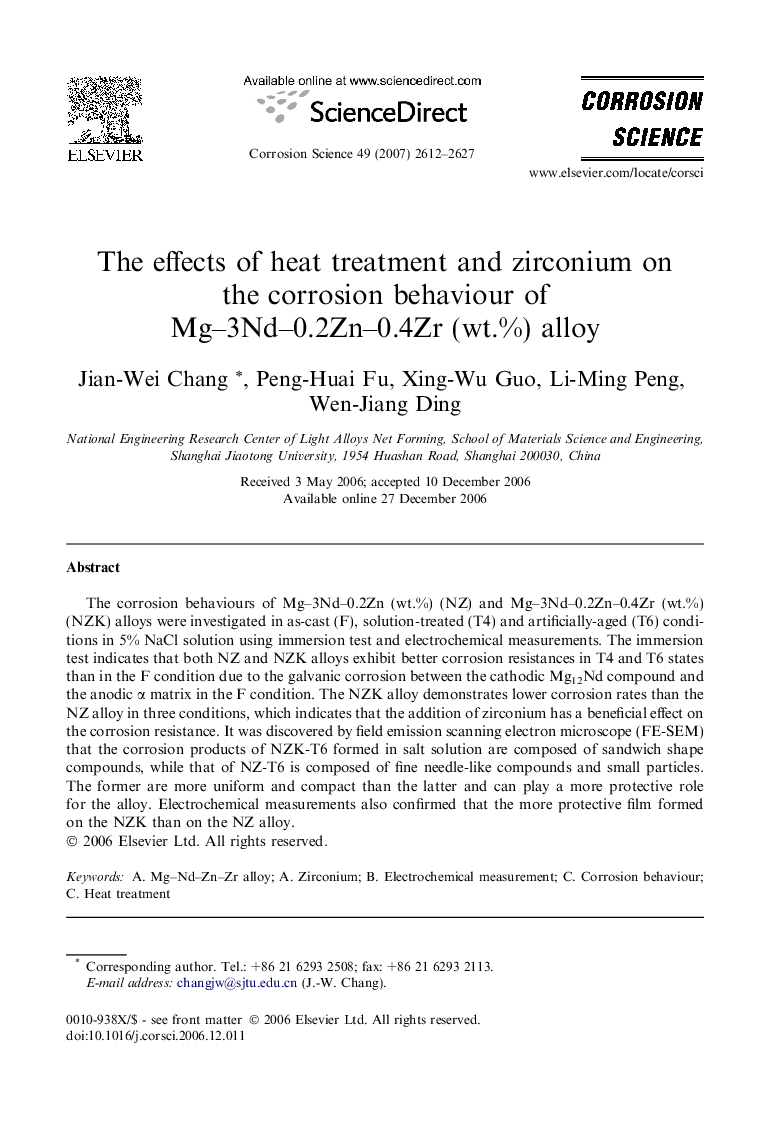| Article ID | Journal | Published Year | Pages | File Type |
|---|---|---|---|---|
| 1472062 | Corrosion Science | 2007 | 16 Pages |
The corrosion behaviours of Mg–3Nd–0.2Zn (wt.%) (NZ) and Mg–3Nd–0.2Zn–0.4Zr (wt.%) (NZK) alloys were investigated in as-cast (F), solution-treated (T4) and artificially-aged (T6) conditions in 5% NaCl solution using immersion test and electrochemical measurements. The immersion test indicates that both NZ and NZK alloys exhibit better corrosion resistances in T4 and T6 states than in the F condition due to the galvanic corrosion between the cathodic Mg12Nd compound and the anodic α matrix in the F condition. The NZK alloy demonstrates lower corrosion rates than the NZ alloy in three conditions, which indicates that the addition of zirconium has a beneficial effect on the corrosion resistance. It was discovered by field emission scanning electron microscope (FE-SEM) that the corrosion products of NZK-T6 formed in salt solution are composed of sandwich shape compounds, while that of NZ-T6 is composed of fine needle-like compounds and small particles. The former are more uniform and compact than the latter and can play a more protective role for the alloy. Electrochemical measurements also confirmed that the more protective film formed on the NZK than on the NZ alloy.
